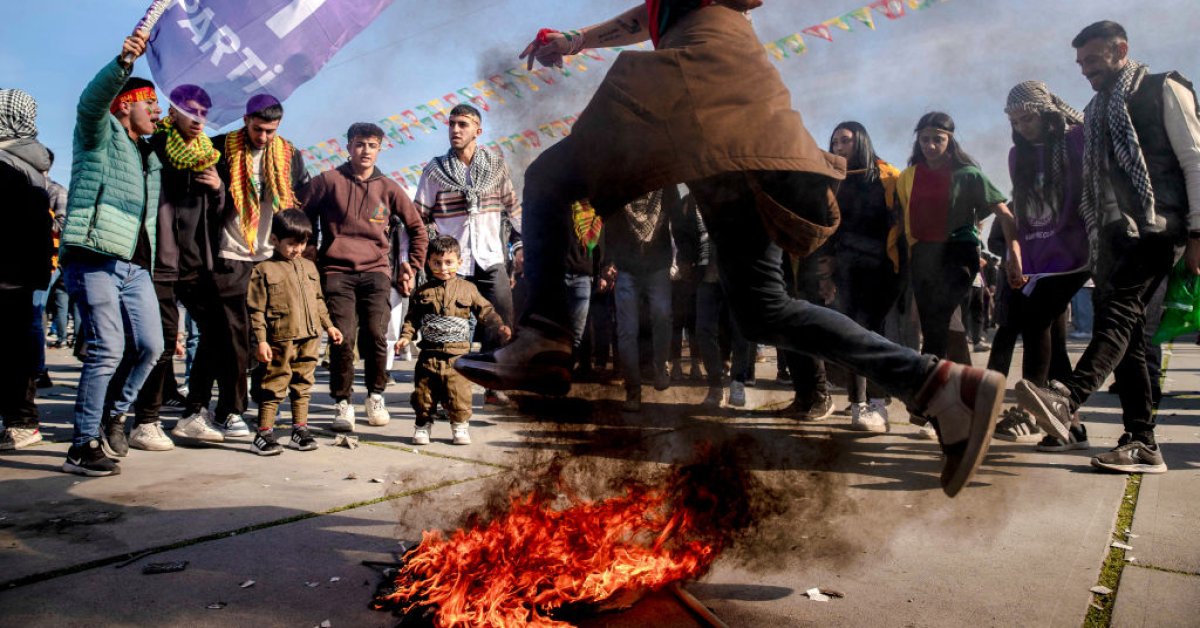
Approximately 300 million individuals worldwide are commencing their annual observance of rebirth and unity with nature in what they consider the most significant cultural event of the year, typically spanning 13 days of traditional practices.
Nowruz, also known as Persian New Year, symbolizes a “new day” in Persian culture and is embraced by various ethnic communities sharing a common heritage along the Silk Roads. This celebration is prevalent in countries such as Afghanistan, India, Iran, Iraq, Kazakhstan, Pakistan, Tajikistan, and Turkey, as well as among their dispersed populations globally.
The anticipation for Nowruz was vividly portrayed through Tuesday’s Google Doodle, which graced the screens in over a dozen nations, including Afghanistan, India, Pakistan, the United Kingdom, and the United States. Notably, access to Google is restricted within Iran.
The vibrant depiction, showcasing animals playing musical instruments, was crafted by Pendar Yousefi, an Iranian artist and Google Design Director. Yousefi drew inspiration from his cherished childhood memories of Nowruz for this doodle creation.
Here is an overview of Nowruz:
Nowruz Commemoration Date
Nowruz, marking the advent of spring, is observed precisely at the moment of the vernal equinox when the sun aligns equally over the Northern and Southern hemispheres due to the Earth’s rotation and tilt.
The commencement of Nowruz varies across nations based on time zones. This year, in Tehran, Iran, Nowruz starts at 26 seconds past 6:36 a.m. on March 20 (11:06 p.m. on March 19, EDT). In India, Nowruz is celebrated on March 20 and August 15 this year, following distinct calendar calculations.
Recognizing the cultural significance, the United Nations designated March 21, the usual vernal equinox date, as the International Day of Nowruz in a resolution passed in 2010.
Historical Roots
The exact origins of Nowruz remain ambiguous, though it is believed to have originated approximately 3,000 years ago with ties to Zoroastrianism, one of the oldest monotheistic religions globally. Historical references suggest that Nowruz was observed in Persepolis, the ceremonial capital of the Achaemenid Empire (550–330 BC).
Various legends surrounding Nowruz emphasize heroic figures. One narrative features Jamshid, a mythical Persian king, who ascended into the skies on the first day of spring, captivating onlookers below and inspiring the commemoration of that day. Another tale recounts Jamshid’s victory over his twin brother, Ahriman, symbolizing the triumph of good over evil and ushering in prosperity.
Contemporary Observance
Preparations for Nowruz typically entail extensive spring cleaning. During the festivities, families engage in visits and communal meals, along with exchanging gifts.
Celebratory customs vary by country. For instance, in Afghanistan, individuals indulge in haft mewa, a dessert comprising syrup-soaked dried fruits, and participate in buzkashi, the national sport involving horse-riding players vying for control of a headless goat carcass.
In Azerbaijan, where Soviet restrictions once concealed Nowruz celebrations, rituals are conducted on four Tuesdays, each representing a different element—water, fire, earth, and wind—prior to the official commencement of Nowruz, heralding the arrival of spring.
In Iran, families assemble a haft-seen, a table adorned with symbolic items like dried fruits, apples, garlic, vinegar, and sprouts symbolizing rebirth. The sprouts, or Sabze, are typically released into flowing water in nature on the final day of Nowruz.
Evolution of Nowruz
In recent years, economic challenges and inflation have led to more austere Nowruz celebrations in Iran. Political tensions between conservative authorities and liberal youth have transformed public dances during Nowruz into acts of defiance, as traditional norms frown upon women dancing with men in Iran.
Concerns over climate change impacting the festival’s essence, rooted in nature appreciation, have become more pronounced among Nowruz celebrants. The festival’s vulnerability is linked to broader environmental issues, prompting reflections on humanity’s role in preserving the planet.
Despite contemporary adversities, Nowruz’s global recognition has surged. In 2009, UNESCO included Nowruz in the Representative List of the Intangible Cultural Heritage of Humanity.
During the 2017 Nowruz celebrations, Irina Bokova, the former Director-General of UNESCO, emphasized the festival’s significance in promoting cultural diversity and resilience amidst challenges posed by violent extremism.
